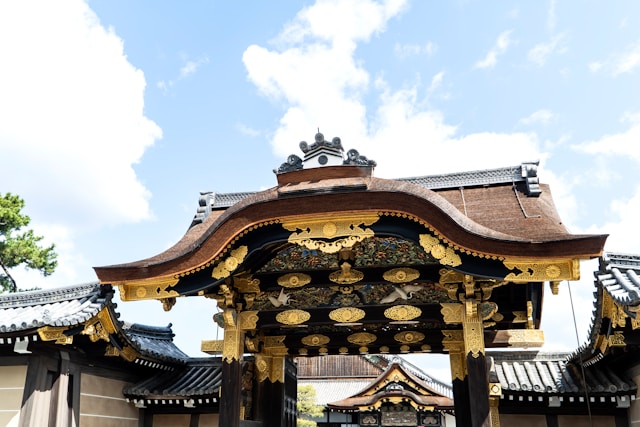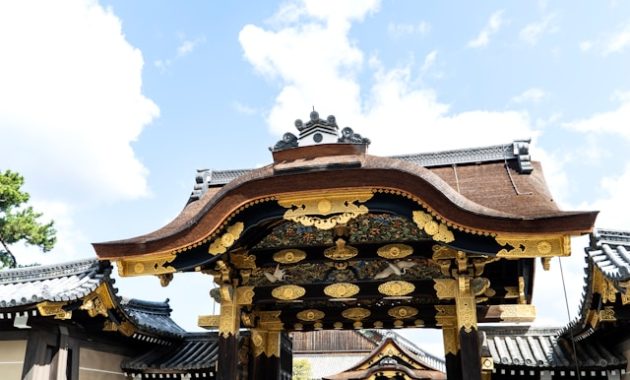
Kyoto, Japan’s former imperial capital, is a city brimming with history, culture, and breathtaking landmarks. For centuries, Kyoto has been the heart of Japan’s cultural heritage, offering visitors a glimpse into the nation’s storied past. Whether you’re interested in ancient temples, beautiful gardens, or time-honored traditions, Kyoto is a treasure trove of historical wonders. Below, we explore Kyoto’s top 10 must-visit historical sites, ensuring an unforgettable experience in one of the world’s most culturally rich cities.
1. Fushimi Inari Taisha: The Shrine of a Thousand Torii Gates
No visit to Kyoto is complete without walking through the mesmerizing thousand vermilion torii gates of Fushimi Inari Taisha. As one of the most iconic landmarks in Japan, this shrine is dedicated to Inari, the Shinto god of rice and agriculture. The thousands of torii gates form a winding path that leads visitors up Mount Inari, providing a serene yet adventurous experience. Each gate is donated by individuals or businesses, symbolizing gratitude for prosperity.
Key highlights:
- The torii gates that stretch for over 4 kilometers.
- The scenic hike up to the summit of Mount Inari.
- The fascinating sub-shrines and fox statues along the trail.
2. Kinkaku-ji (The Golden Pavilion)
Known for its breathtaking beauty, Kinkaku-ji, or the Golden Pavilion, is one of Kyoto’s most stunning attractions. The pavilion is coated in brilliant gold leaf and surrounded by reflective ponds and lush gardens, making it one of the most photogenic places in Japan. Originally built in the 14th century as a retirement villa for shogun Ashikaga Yoshimitsu, it was later transformed into a Zen Buddhist temple.
Key highlights:
- The glittering golden facade and stunning reflection in the pond.
- A leisurely walk around the beautiful gardens.
- The Sekka-tei tea house, offering a quiet retreat from the busy grounds.
3. Kiyomizu-dera Temple
Perched on a hillside, Kiyomizu-dera is an extraordinary Buddhist temple that offers panoramic views of Kyoto. Dating back to the 8th century, the temple is famous for its large wooden stage that juts out from the main hall, overlooking the city and surrounding forests. Visitors flock here during the cherry blossom and autumn foliage seasons to witness the spectacular natural scenery.
Key highlights:
- The enormous wooden stage with commanding views of Kyoto.
- The Otowa Waterfall, where visitors can drink from three streams of water for health, longevity, and success.
- Seasonal beauty, particularly in spring and autumn.
4. Nijo Castle: A Glimpse into Feudal Japan

Built in 1603, Nijo Castle was the residence of the Tokugawa shoguns during their reign over Japan. It is one of the best-preserved examples of feudal architecture, with magnificent Ninomaru Palace featuring intricately painted sliding doors, tatami-matted rooms, and “nightingale floors” that chirp when walked upon to warn of intruders. Nijo Castle is a UNESCO World Heritage site, and its meticulously landscaped gardens provide a tranquil setting.
Key highlights:
- The Ninomaru Palace with its exquisite interiors.
- The Ninomaru Garden, designed by the famous tea master Kobori Enshu.
- The fascinating “nightingale floors” that squeak when stepped on.
5. Gion District: The Geisha Experience
Stepping into the Gion District is like traveling back in time. Gion is Kyoto’s most famous geisha district, where you can still see maiko (apprentice geishas) walking along the cobblestone streets in their traditional attire. The area is lined with traditional teahouses and restaurants, preserving the atmosphere of old Kyoto. Visitors can also book a seat for a performance at Gion Corner, where various traditional Japanese arts are showcased.
Key highlights:
- Spotting geishas and maikos in the evenings.
- A visit to Gion Corner for an introduction to Kyoto’s traditional arts.
- Exploring the beautifully preserved wooden machiya houses.
6. Arashiyama Bamboo Grove
A visit to Arashiyama is a must for nature lovers. The famous Bamboo Grove, with its towering bamboo stalks swaying gently in the breeze, creates an otherworldly atmosphere. Walking through the bamboo forest offers a sense of serenity and wonder, making it one of the most photographed locations in Kyoto. Nearby, you’ll find the Togetsukyo Bridge and the Tenryu-ji Temple, another UNESCO World Heritage site.
Key highlights:
- The ethereal Arashiyama Bamboo Grove.
- The Togetsukyo Bridge, offering picturesque views of the river and mountains.
- A visit to the Tenryu-ji Temple, with its beautiful garden designed by Muso Soseki.
7. Ryoan-ji Temple: Zen and Minimalism
For those seeking peace and reflection, Ryoan-ji Temple is a must-visit. Famous for its rock garden, Ryoan-ji exemplifies Zen minimalism. The garden consists of 15 rocks arranged in such a way that, from any vantage point, only 14 can be seen at once. This abstract garden has been interpreted in many ways, and visitors often sit in quiet contemplation, finding meaning in its simplicity.
Key highlights:
- The enigmatic rock garden that continues to inspire.
- The Kyoyochi Pond, surrounded by beautiful seasonal foliage.
- Exploring the traditional tea houses within the temple grounds.
8. Heian Shrine: A Celebration of Kyoto’s Past
Constructed in 1895 to commemorate the 1,100th anniversary of Kyoto’s founding, the Heian Shrine is a relatively modern shrine but draws from ancient architectural styles. The massive torii gate at the entrance is one of the largest in Japan, and the shrine’s bright vermilion buildings contrast beautifully with the serene gardens. The Heian Shrine Garden is especially impressive during cherry blossom season when thousands of blooming sakura trees transform the landscape.
Key highlights:
- The immense torii gate that towers over the approach.
- The Heian Shrine Garden, perfect for a leisurely stroll.
- Seasonal events, such as the cherry blossom festival.
9. Sanjusangendo Hall: A Temple of 1,001 Statues
Sanjusangendo Hall is famous for housing 1,001 statues of Kannon, the goddess of mercy. These life-size statues, arranged in rows, are awe-inspiring in their sheer number and intricate detail. The hall itself, the longest wooden structure in Japan, creates a humbling and sacred atmosphere that captivates visitors.
Key highlights:
- The impressive 1,001 statues of Kannon.
- The annual archery contest held on the temple grounds.
- The quiet reverence of the longest wooden building in Japan.
10. Philosopher’s Path: A Stroll Through Kyoto’s Beauty
The Philosopher’s Path is a peaceful, scenic walk that runs alongside a canal lined with cherry trees. Named after Nishida Kitaro, one of Japan’s most famous philosophers, the path offers a tranquil setting for contemplation. The 2-kilometer route is particularly beautiful in spring when the cherry blossoms are in full bloom, but it is a picturesque destination throughout the year. Several temples and shrines, such as Ginkaku-ji (The Silver Pavilion) and Eikan-do, are easily accessible along the route.
Key highlights:
- A scenic walk along the cherry tree-lined canal.
- Visiting nearby Ginkaku-ji and Eikan-do.
- The peaceful atmosphere, perfect for relaxation and reflection.
Kyoto is a city where history, tradition, and beauty converge. From ancient temples to tranquil gardens and iconic torii gates, the city offers countless opportunities to explore Japan’s cultural heritage. These top 10 must-visit historical sites are just the beginning of what Kyoto has to offer.